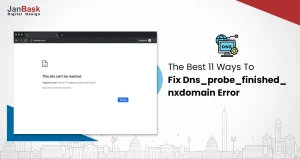
Nike.com, Adidas.com or Puma.com
You type this and easily get to your favourite shoe brands. You know why? Because of how easy it is to remember and how unique their domain names are.
Being online is not enough for your business’s growth because it needs to secure an online presence as well. You need an exclusive and catchy address on the internet that makes your business found online easily and can also be used for other specialised online functions. Not going exactly into the technical jargon but a domain name does exactly this. The domain lets online visitors identify your brand, website and email address and also be used for other specialised online functions.
So you may ask what a domain name has to do with their online search popularity? Why does it matter? How do you buy a domain name? In this blog we will not only address these questions but also help you deal with these points:
“Domain names are a key part of the Internet infrastructure. They provide a human-readable address for any web server available on the Internet.”
Every website on the internet has an IP address that points to a website’s location. Since IP addresses are generally a set of numbers like 216.27.61.137, it seems quite tedious to remember them all the time. That is where domain names come in handy. According to Mailchimp, “A structure called the Domain Name System (DNS) translates those IP addresses into names that are (hopefully) simple to remember. Those names are called domain names.”
It’s not enough to have an exemplary website design but you also need to have a good, brandable domain name. It’s more than a rocket science to get a domain name that matches with your business because usually you don't get it. But remember your website’s domain is what people enter into the address bar on their browsers which redirects them to your website, so it has to be exclusive, unique.
Other than giving your brand an exclusive address, a domain name also benefits your business by:
We will share with you the top 7 domain registrars and detailed differences among them based on factors like price, security or support but first let’s figure out how to register a domain name. So whether you are starting a new online business or a personal website, getting a domain that aligns with your business or website goal is a must to make an impression. Choosing the right domain name may sound like a technical process but it is not, at least not with the easy and simple to follow step-by-step guide on how to buy a domain name, we are providing below:
The market is filled with easy, affordable, and sometimes free domain providers but you just cannot choose any of them at the surface level. You have heard popular names like GoDaddy or Domain.com or new players like Namecheap or Bluehost, all these are domain name registrars. Most of them offer search tools to look for available domain names and extensions and they sell it to you. Some of the registrars come along with add-ons like hosting, website building, and email addresses, mostly they charge you for it but at discount times or sales they offer them for free. So if you know where to buy a domain name, remember a good domain registrar is who:
There is a reason we remember Nike.com or Amazon.com so easily, these domain names are not some generic concept but a brandable entity for these companies. After all, your domain name is how your potential customers will find you, remember you and may also spread the word about your business online. So try to go for a domain name that is unique to your business, that reflects your brand story instead of an amalgamation of some random bunch of keywords. A domain name should be:
If you found your chosen domain name and managed to register it in the first attempt, then congratulations! But at times you belong to those unfortunate lots whose first choice in domain name is either taken or isn’t available. So what to do in that case? Well, we have got you covered, read to know how you can you still have your ideal business or personal domain name:
Pro Tip: Three Ways To Buy A Pre-Owned Domain Name
Even though your first, second or even tenth choice of domain name is taken or isn’t available that doesn’t mean you can never get a desirable domain name? Just focus on a domain name that if not fully but still reflects your brand value and go for it. You can always buy the desired domain name once you have upscale your business, for now locate a name that is closer to what you wanted and proceed, check availability and then hit the registration. But do remember following things:
So you have a domain name, great, now purchase it. You also need to decide how many years you want to keep the domain and then pay for it accordingly. Since you can’t permanently buy a domain name, the longest would be 10 years, so you'll need to decide the number of years for which you want to register your domain and then set it to auto-renew. But before you hit the payment, keep in mind it’s not just important to know where to buy a domain name but it is equally important to know who you are buying from? We insist that before going forward with the payment, ensure you checked all these points:
Just buying the domain name is not the last step but the process ends with you verifying your ownership. This step involves you sending mail from the email address you used while registering. This is a crucial step to know you legally own your domain name. You will receive the mail within a few minutes after finishing the domain setup. If it doesn’t then resend the request but ensure that you do it immediately because waiting around the confirmation and delaying the verification may lead to a temporary suspension from the registry.
Do you know your domain name plays a crucial role in growing your brand online and driving more traffic to your website?
Since we have discussed different ways you can buy a domain name, we also need to understand the different types of domain that are within the domain name registry and serve different purposes for your businesses. So read on:
Top-level domains (TLDs) is the part of a domain that follows the dot, for instance, com, org or net. As the name suggests, they represent the highest level in the Domain Name System hierarchy. These includes:
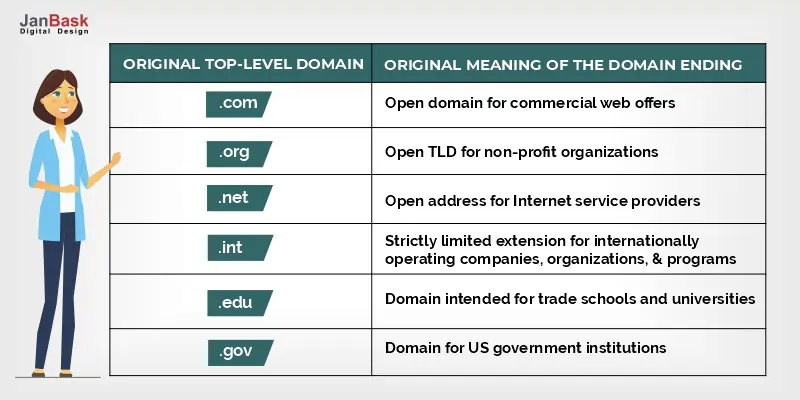
These two-letter domains allow online visitors to distinguish one country from another: .uk and .us, for example, represent England and America respectively. Here are few examples of ccTLD:
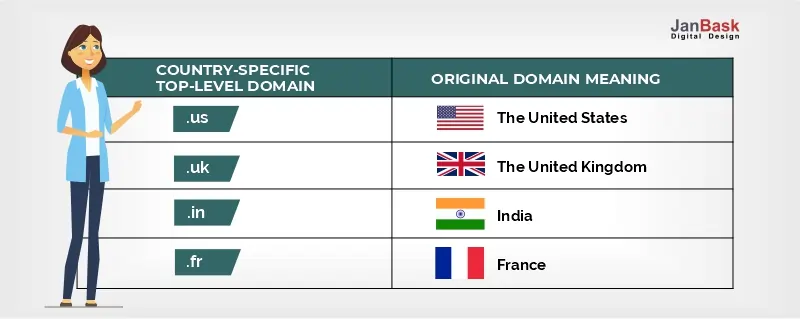
Generic top-level domains function as a category of top-level domains within the DNS. As of now, there are currently 21 generic top-level domains within the root zone, which is the highest level of the domain name system structure. While there are over 1,500 gTLDs in use, some of the popular ones are as follows:
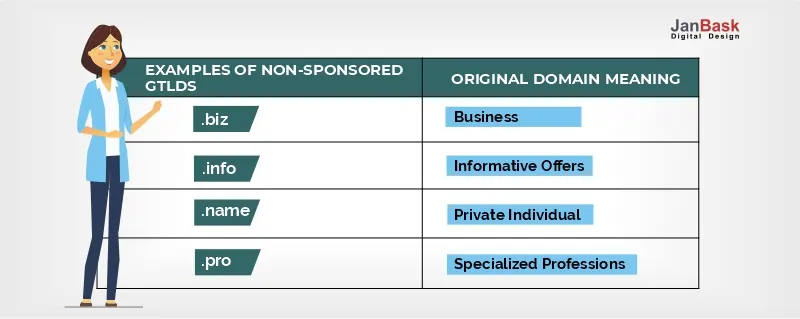
Second-level domains are those domains that follow top-level domains. There are essentially the names of the business, brand name, company name or vendor that registered the domain name to make a simple identifier for potential customers. For instance, , in “Adidas.com”, “Adidas” is the second-level domain of the “.com” top-level domain.
Sometimes, in these general second-level domains, you can also see country-code second-level domains (ccTLD), wherein the second-level domain will be found to the right of the period, for instance, in “adidas.co.ca”, the country code i.e. Candas' top-level domain is “.ca” and the ccSLD is “.co”
The Third-level domains usually follow the second-level domains and are on the left of SLD and are often referred to as the subdomain. Big companies tend to use third-level domains as identifiers to distinguish between various departments or parts of their site.

It is really a conundrum, on one hand you are looking for the best domain for your website or business because it’s a vital part of your brand identity. On the other hand, you are constantly worried that it might not go beyond your budget. So to help you in avoiding a situation where you might have to compromise, we will share the top 7 domain name providers and explain you which one of them is the best based on Pricing, Additional Services, Ease of Use, Security and Support:
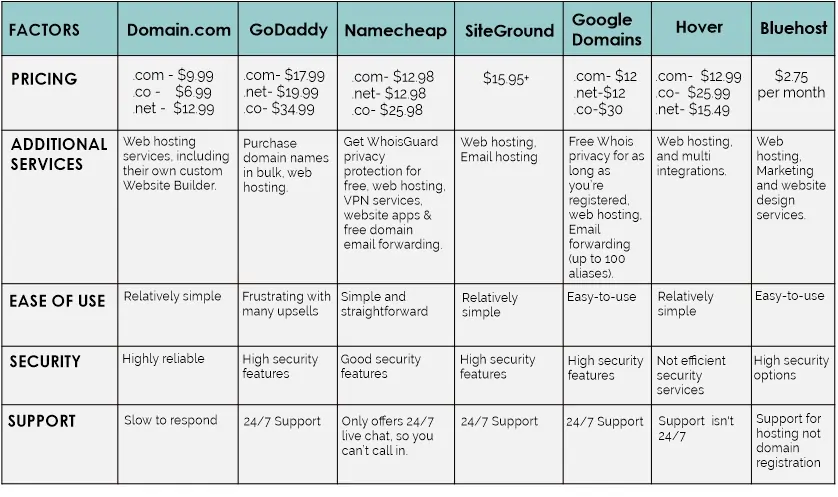
Hidden Costs of a Domain Name You Should Know About:
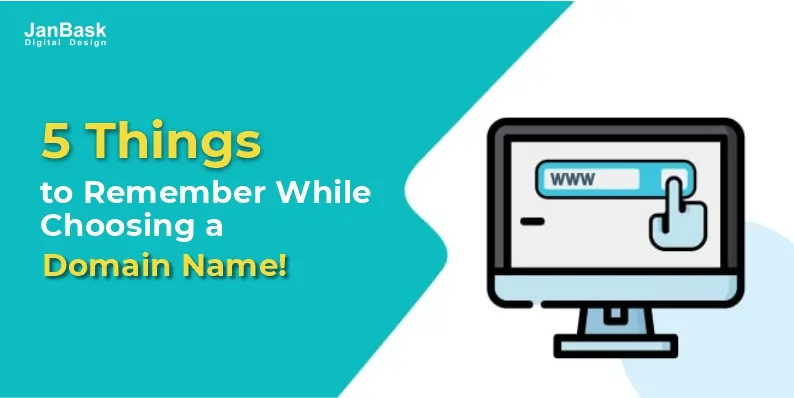
Apart from choosing a simple and easy to spell and remember Domain name, there are other things that you should consider before you choose a domain name or buy one. These are:
It’s good to know what’s been going on with the competitor’s domain name in your industries, take note of everything from keywords to domain extension to ensure what you come up with not only reflects your brand but also gives you an unique edge over them.
Ensure your domain name is not used by someone else with a quick search at the trademark offices of your country. You can play with already registered domain names or use abbreviations but that doesn’t mean you can piggyback off the reputation of an established brand. That’s bad for your brand value and pocket if they file suit against you.
There could be several reasons you want to switch your current registrar, so make sure that the registrar allows this transfer to be an easy and less complex process. However, if they seem too edgy about it or the company charges an additional fee for this then look for another registrar.
Social media platforms be it Facebook, Instagram or Twitter alleviates your online presence, so once your choice of domain name is available, search it up on these social media channels and reserve it. It’s equally important that your domain name isn’t taken by someone else on social media too so that you can use them later for social media marketing without a hassle.
You might be tempted to use the trending word, catchphrase or other things as your domain name but until and unless it truly reflects your brand value in the longer term, avoid choosing them. Whether it’s your websites or domains, they both are long-term investments, so choose wisely and try to think out of the box and stay true to your brand’s goal and vision.
If you’re motivated much to buy a domain name for your business, why don’t you check out this insightful blog on how to build a website from scratch and know how domain name plays a crucial role in high conversion rate.
Finding a domain that is affordable, suits your branding image and is bringing you results in terms of conversions and sales is almost wishful thinking. But the truth is that not having a domain name of your dream does not imply that it will break your business, same goes for the budget of buying a domain name. Your domain name matters. But something else matters too. Your budget. Obviously, we are not asking you to be on a shoestring budget to get a domain name but you should also consider that you can always upgrade once you have enough revenue..
Simply speaking, “how to get a domain name?” or “How much a domain name is,” depends on a lot of factors but the foremost reason is what you need. Buying a domain might seem a complicated matter but we hope with this step-by-step guide, we made it a walk in the park. We also provided you with a detailed comparison of the top domain registrars to make choosing an easier option for everyone from beginners to first-time buyers. Additionally, we also shared a few tips that you need to consider before you buy a domain....so go ahead, don’t wait to register your domain. Do it now! Happy Buying!
Drop us a comment if any step in the guide of how to buy a domain name confuses you, we will be happy to help!

Leave a Reply